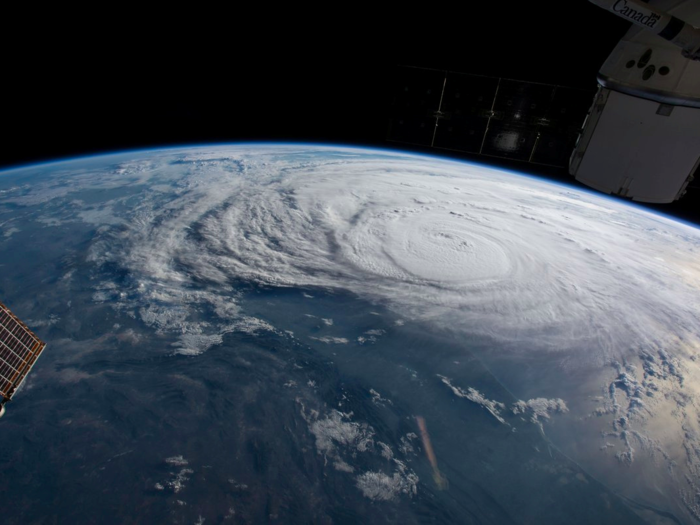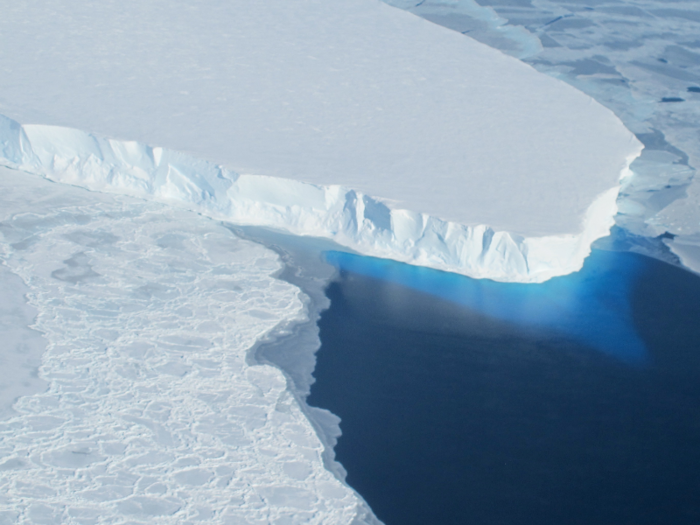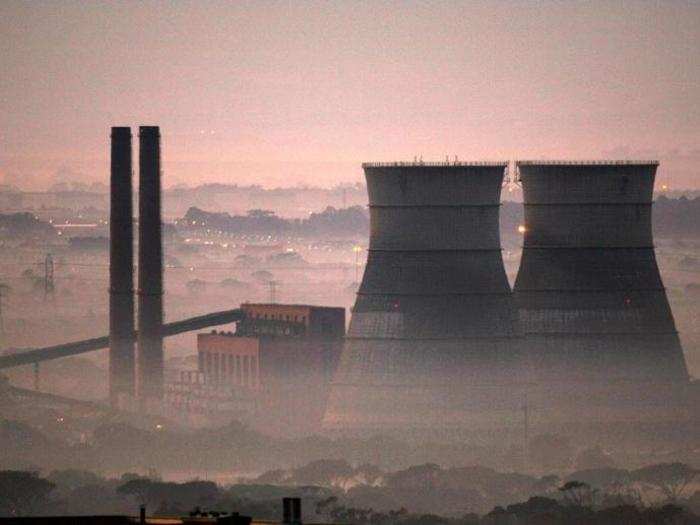- Home
- slideshows
- miscellaneous
- There's almost no chance humanity will act quickly enough to prevent catastrophic climate change, so here are the geoengineering techniques that might cool the planet
There's almost no chance humanity will act quickly enough to prevent catastrophic climate change, so here are the geoengineering techniques that might cool the planet
The IPCC thinks it's likely that we'll need to use carbon-capture technology that can suck carbon dioxide out of the air and store it underground.

Some scientists think we could cool the planet with techniques that fall under the category of solar radiation management: limiting the heat Earth absorbs from the sun.

One of the most discussed forms of this technology takes a cue from volcanoes. When volcanoes erupt, the sulfur they pump into the sky reflects some of the sun's radiation back into space for a while. Artificially filling the sky with sulfur, therefore, could lead Earth to absorb less warmth from the sun's rays.
If humanity were to send planes to regularly release sulfur or some other chemical that reflected light into the stratosphere, this could cool the planet for as long as the flights continued. A number of researchers are studying and cautiously experimenting with this idea.
But it could come with serious drawbacks.
You can see how this strategy modifies the natural greenhouse effect — and the global warming effect caused by carbon dioxide emissions from fossil fuels — in the infographic below.

Other forms of solar radiation management would modify the skies in different ways to achieve similar goals.

Possible alternatives to releasing clouds of sulfur include brightening our existing clouds or creating extra clouds that would reflect away sunlight.
But solar radiation management could cause devastating side effects.

Some researchers fear that modifying the skies could change conditions on Earth so drastically that war would erupt between nuclear powers.
For example, any country with an air fleet might decide that releasing clouds of sulfur is necessary. But doing so would change atmospheric conditions around the globe, creating droughts or waves of particularly intense hurricanes in unpredictable areas. The sulfur or other chemicals released into the sky could also potentially cause side effects for people or wildlife.
Another geoengineering method that sometimes gets discussed but would be hard to control involves dumping iron into the ocean.

In theory, dumping large quantities of iron into the ocean might cause phytoplankton to bloom, which might then suck carbon out of the atmosphere.
"Give me a half tanker of iron, and I will give you an ice age," oceanographer John Martin famously said in 1988.
But no one knows if this technique would work effectively, or if it would just create massive dead zones in the ocean where nothing but algae can survive.
People could also geoengineer Earth's oceans by covering large parts of their surfaces in white foam.

Covering large parts of the ocean in foam could help reflect sunlight and heat away from the planet, the same way sea ice in the Arctic does.
But as a recent study on ocean solutions to climate change found, this strategy would only have a useful effect for as long as the foam lasted, meaning it might have to be replenished daily or weekly. And covering the ocean with a layer of foam could have deadly effects on marine life.
As a last-ditch effort to avoid catastrophic sea-level rise, some scientists have suggested propping up parts of the Antarctic ice shelf.

Sea levels are already rising rapidly, threatening to swamp cities like Miami within the lifetimes of people alive today. If the sheets of ice that sit on top of Antarctica and Greenland were to collapse, the rate of sea-level rise could skyrocket. That would make coastal cities uninhabitable and destroy trillions of dollars' worth of property and infrastructure.
To prevent or slow that coastal flooding, people could build massive walls under the ice sheets to prevent them from falling apart, according to a study published last month in The Cryosphere, a journal of the European Geosciences Union.
That would be the biggest civil-engineering project ever attempted in human history, yet it might prevent devastating floods that could force tens or hundreds of millions of people to move.
Transforming the world's economic and energy systems in the next 10 to 20 years is incredibly difficult, but these geoengineering plans may be even harder to pull off. And we don't know if they'd work.

Some geoengineering schemes seem like rational technological solutions, the sort of innovations that human ingenuity can produce to overcome seemingly overwhelming problems. But other more radical geoengineering techniques are generally described as last-ditch efforts, the equivalent of a Hail Mary pass that may have to be thrown if we miss the deadline to act on climate change. Even most experts who study these techniques say they hope it never comes to that.
But what we do know about all these strategies is they'd be very hard to pull off, could have devastating side effects, and may not work as intended.
Plus, no geoengineering solution would fully solve the root cause of climate change.

Regardless of which geoengineering scheme people might someday invent or try, some consequences of climate change will likely continue. That's because many geoengineering proposals don't directly address the root cause of global warming.
Our food, energy, and transportation systems pump carbon dioxide and other greenhouse gases into the atmosphere, and will continue to do so unless we eliminate those emissions. Those gases will keep trapping heat from the sun, raising average temperatures on land and in the ocean, and causing the sea to become more acidic.
So even if planes release sulfur into the sky, warming would shoot back up when those flights stopped. Building a wall under ice sheets wouldn't address the other effects of climate change. And covering the sea surface in foam wouldn't end ocean acidification, which is caused by carbon dioxide.
The simplest way to maintain the stable climate that has allowed modern human civilization to thrive is to end our original geoengineering experiment: releasing unprecedented amounts of heat-trapping gas into our planet's atmosphere.
Popular Right Now
Popular Keywords
Advertisement